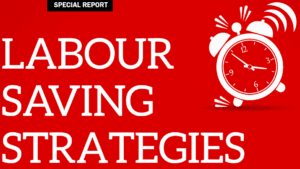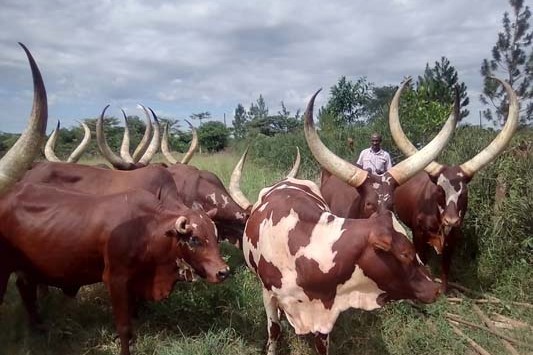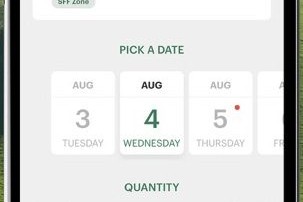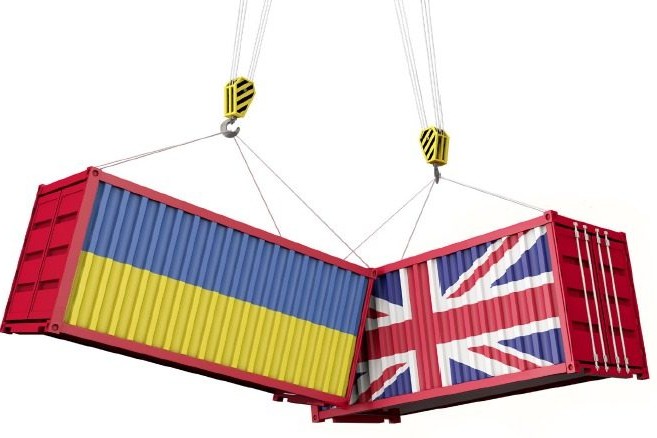By Anne Lee
 The ability to do away with reels and standards and fence cows “virtually” as well as get cows to and from milking on their own could save a 520-cow farm like the Lincoln University Dairy Farm (LUDF) 38.5 hours a week during the milking season.
The ability to do away with reels and standards and fence cows “virtually” as well as get cows to and from milking on their own could save a 520-cow farm like the Lincoln University Dairy Farm (LUDF) 38.5 hours a week during the milking season.
Halter business development executive Theo Beaumont outlined how the new technology works at a recent LUDF focus day and while LUDF doesn’t have the solar-powered, smart-collar technology a desktop exercise for the farm estimates possible time savings across several activities could be significant.
In addition to the 38.5 hours per week saved on not moving and fencing cows through the milking season it could also allow:
- 21 hours per week to be saved on moving break fences in the winter.
- five hours per week saved during calving.
- Seven hours per week to be saved not having to tail paint cows due to heat detection abilities.
- Seven hours per week saved on detecting heats.
- two hours per week saved on drafting AB cows.
The Halter system enables farmers to set up virtual fences with the solar-powered GPS locator system identifying where cows are relative to that “fence.”
As the cow approaches the fence it receives cues from the collars as sound and vibration with sounds getting louder and more frequent the closer the cow gets.
Training over a six-to-seven-day period gets the cows familiar with what the vibration and sounds mean and initially an electrical pulse signals to the cow it’s reached the fence.
While a cow will receive a visual cue from a typical electrified tape break fence or the wire on a permanent fence, the virtual fence gives its cues through sound and vibration.
The consequences of not heeding those cues in each case is the same although once through the initial few days of training, the Halter system will use sound and vibration to guide a cow back through the virtual fence if they’ve breached it rather than a pulse.
The ability to “draw a line” on a map in the app on your smart phone means the virtual fence can be shifted without people having to go into the paddock.
Breaks can be adjusted and shifted any time and can even be pre-set to occur over future hours or days.
Halter’s cowgorithm (their patented sophisticated set of algorithms ) guides cows around – asking them to move left or right or forward – means there’s no need to physically get cows out of a paddock and bring them to milking.
Cows can be trained to turn right when they hear the sound from their left side and will turn left if the cues come from their right side.
The Halter business model involves the farmer leasing the hardware – the collar and physical smart technology components – and paying a subscription for the software modules accessed via an app.
That software can be updated, just as smart phones are updated, so there’s no need to be removing hardware from the cows.
Currently the company is rolling out the ability to draft individual cows or groups from the herd while the cows are still in the paddock.
Individuals are directed away from the main herd and can then be brought back to the yard or sent to another area of the farm. LED lights on the collar light up to make those selected cows more visible.
The system can also “passively” draft cows – switching the collar on a specific cow into “neutral“ so a calving cow, for instance, could have access to the whole paddock area rather than an area virtually fenced for springers.
As well as the ability to manage cow movements a raft of other farm management efficiencies are available such as heat detection, rumination insights and pasture management with environmental monitoring now on the company’s radar.
Halter’s head of business development Steve Crowhurst says the company has found the time savings on farms using the technology are substantial.
“I’m pretty confident we really have the answer to labour shortages we’re seeing onfarm today.
“So often farmers are compromising in terms of what jobs they can get done onfarm in the time they have available and what we’re seeing is that this technology is removing that need to choose between one job and another or having to compromise on the jobs they are getting done.
“What we’re seeing is that it’s opening up more options on how farmers can operate.”
At LUDF, for instance, the farm team is establishing pure plantain paddocks and grazing cows on them for short periods through each day in an effort to get the nitrogen leaching reduction benefits plantain can give.
“But shifting cows on and off all takes time. Halter can do that for them so they can get their 9kg N/ha leaching reductions without any additional pressure on staff time at all,” Steve says.
The monitoring device on the collar measures the 3D movements of the cow and the strength of those movements.
From those measures powerful data analysis and algorithms can distinguish the animal’s behaviours such as rumination, grazing, standing, lying and walking and from that data it can provide heat detection and health alerts.
There’s no need to tail paint cows or have anyone standing in the farm dairy each morning picking cows for insemination. There’s also time to be saved by acting early when it comes to health alerts. Along with time savings the system also offers some significant opportunities to improve efficiency and productivity gains Steve says.
The ability to include pasture growth and cover information for instance means that as virtual fences are set up the app can give the farmer information on how much feed on a per cow basis is being allocated.
“That knowledge – the ability to get more precision with feeding and allocation, the ability to back fence cows easily and move cows so easily to the next break all drive pasture utilisation and that’s the big driver of productivity and profitability.
“Halter is an investment where farmers can reduce costs but they can also unlock new value opportunities with operational efficiencies.”
The farmer feedback loop is an integral part of Halter’s strategy.
It means top farmers feeding back information and working with some of the country’s leading minds when it comes to data, software and firmware development, Steve says.
“We’re constantly looking at how we help farmers achieve their long-term goals, how we provide them with a robust system for the future and keep on improving and updating that – that’s why this technology is so transformational.”





